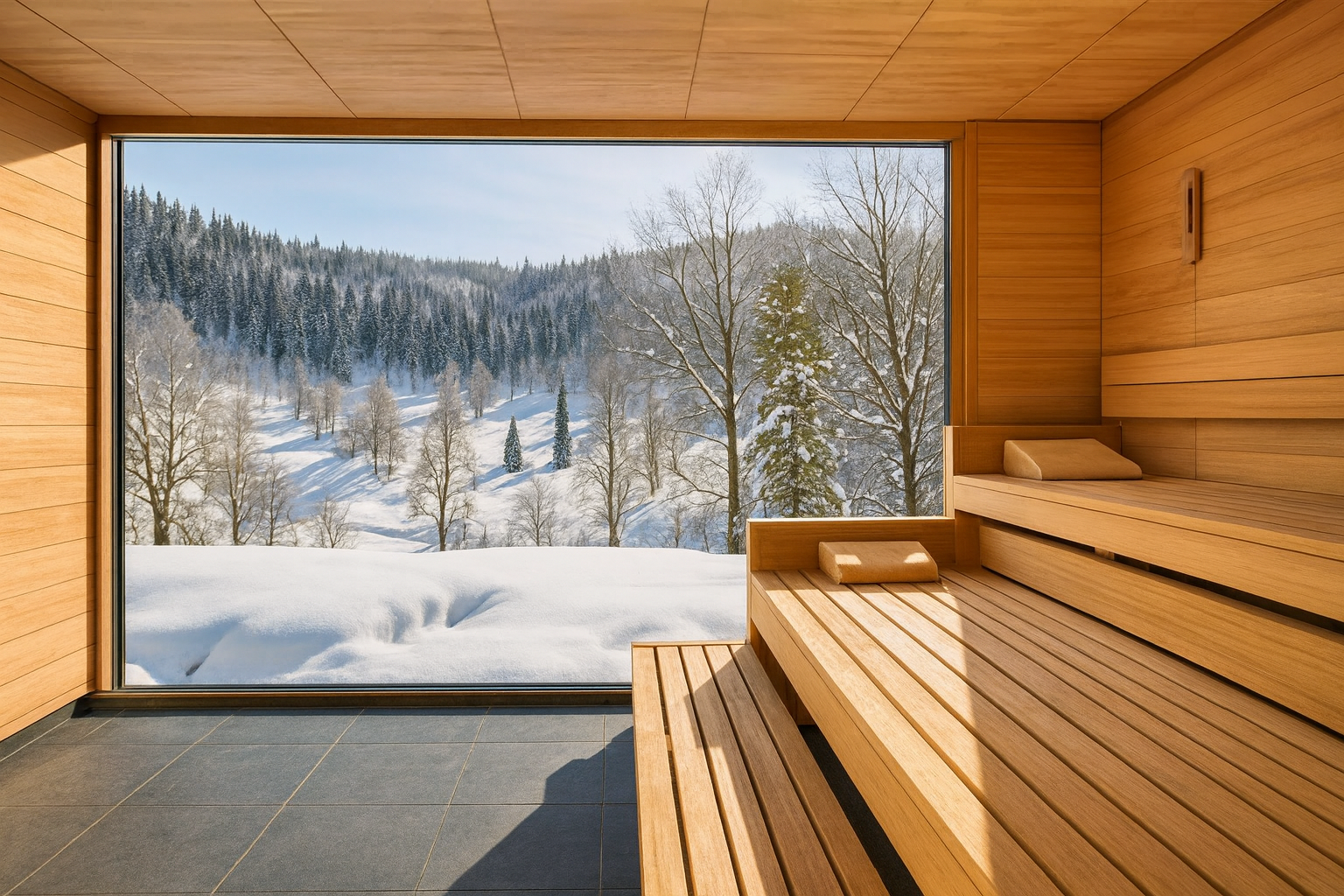Winter sauna: what are the advantages and how to prepare?
Bathing in winter is one of the most welcomed seasonal pleasures, and its health and well-being benefits are undeniable. In this article, we will discuss the main benefits of a sauna in winter and give you tips on how to prepare properly so that this ritual is not only enjoyable but also safe.

Advantages of a sauna in winter
Strengthening immunity
Winter is a time when colds and flu are more common. A sauna is a great way to boost immunity. When you take a sauna, your body receives a heat shock that helps activate the immune system, stimulating the production of white blood cells that help fight infections.Good blood circulation
Sauna helps to improve blood circulation, which is especially important during the cold season, when the body tends to stiffen up and blood vessels constrict. Regular sauna sessions promote blood circulation, improve heart function and lower blood pressure.Stress reduction
In winter, we often feel tired and stressed because of the dark and cold days. A sauna acts as a natural antidepressant, as the heat stimulates the release of endorphins - the hormones of happiness. This helps to relax, reduce tension and improve sleep.Skin care
Cold air and dry indoor air can have a negative effect on the skin, drying and irritating it. In a sauna, the skin is deeply cleansed and moisturised by opening the pores and removing toxic substances through intense sweating. This stimulates skin renewal and helps maintain a healthy appearance.
Benefits of sauna for weight management
In addition to all the other benefits, a sauna in winter can be useful for weight management. The high temperatures stimulate intense sweating, during which the body loses fluids, leading to temporary weight loss. Although it is not a permanent weight loss method, sauna can be a great complementary tool when combined with a healthy diet and physical activity. Also, regular sauna sessions speed up the metabolism, which can help to burn more calories over time and contribute to weight control.
How to prepare for winter baths?
Adequate clothing and equipment
It is important to choose the right outfit and accessories before going to the sauna. Avoid synthetic materials and choose natural fibres such as linen or cotton. Remember to wear a sauna hat to protect your head from overheating.Hydration
It is essential to hydrate properly before going to the sauna. Drink enough water or herbal tea to avoid dehydration. Sweating profusely in a sauna leads to a loss of fluid, which needs to be replaced.Warm-up before sauna
For a more pleasant and safer sauna experience, it is recommended to warm up lightly beforehand - for example, by doing a short exercise or taking a walk outside in warm clothes. This will help your body to adjust to temperature changes.Time and number of cycles
It is not advisable to stay too long in the sauna. For beginners, 5-10 minutes in the first cycle is enough. Then you can take a short break and return to the sauna for a few more minutes. It is recommended to take 2-3 cycles in total, with a rest and cool down period in between.Cooling down after a sauna
After the sauna, you need to gradually cool down your body. This can be done by taking a cold shower, stepping out into the cold air or even immersing yourself in ice water. The sudden change in temperature stimulates blood circulation and strengthens the body.
Conclusions
Bathing in winter is not only a pleasure, but also a source of health. It boosts immunity, improves blood circulation, reduces stress and takes care of the skin. The most important thing is to prepare properly and know how to enjoy the benefits of a sauna safely. So, once you are properly prepared, enjoy the winter saunas and their benefits.